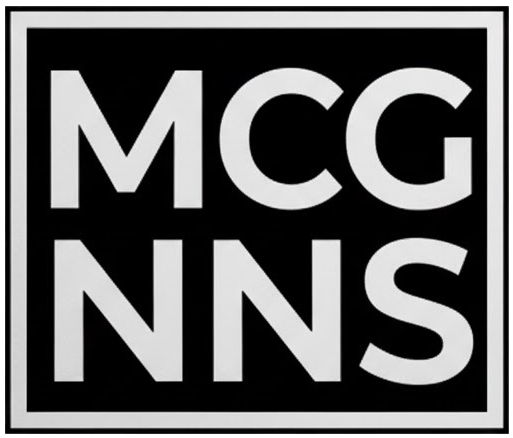Professional Insights on Custom Website Development Costs


Key Factors That Determine the Cost of Your Custom Business Website Development

A custom business website development project varies widely in price because multiple interrelated factors influence final investment. Understanding what factors influence the cost of developing a custom business website helps you plan budgets and align digital objectives with financial realities. In this guide, we define each major cost category—scope and complexity, design customization, functionality, content volume, technology stack, team expertise, ongoing maintenance—and illustrate how they aggregate into a comprehensive price. You’ll learn how timelines, provider selection, and audience-specific needs (startups, higher education, government agencies) shape budgets in 2025. Finally, we explore strategies to maximize long-term value and tools that provide transparent estimates, ensuring you enter consultation with confidence and clarity.
What Are the Main Components That Influence Custom Website Development Cost?
Every custom business website development cost breaks down into six core components. These categories form a hierarchical cost structure that mirrors project phases and deliverables.
- Project Scope and Complexity
- Design Customization Level
- Functionality and Features
- Content Volume and Creation
- Technology Stack and Integrations
- Ongoing Maintenance and Hosting
Below is a comparative breakdown of these components:
Component
Typical Cost Range
Impact on Budget
Scope & Complexity
$5,000–$50,000+
Higher page counts, custom workflows, integrations
Design Customization
$2,000–$15,000
Bespoke UI/UX vs. template-based themes
Functionality & Features
$3,000–$25,000+
E-commerce, booking, CRM, interactive applications
Content Creation
$1,000–$8,000
Copywriting, SEO, multimedia production
Technology & Integrations
$2,000–$20,000
CMS choice, APIs, custom development
Maintenance & Hosting
$600–$6,000/year
Security, updates, performance optimization
How Does Project Scope and Complexity Affect Website Pricing?
Project scope defines the size and depth of a website’s functionality and content. A larger page count and intricate information architecture increase development hours and testing requirements. Custom user roles, personalized workflows, and advanced data management systems further amplify complexity. For example, a 15-page brochure site may cost $25,000, while a 75-page corporate portal with multilingual support and custom dashboards could exceed $60,000. As complexity grows, so do design revisions, quality assurance cycles, and project management overhead—driving costs proportionally higher.
What Role Does Design Customization Play in Cost Determination?
Design customization ranges from prebuilt templates to fully bespoke user interfaces and brand identities. Template-based design can start around $2,000, but bespoke UI/UX—with custom graphics, animations, and brand integration—often begins at $8,000 and scales upward. Unique visual elements and interactive prototypes require specialized design teams and iterative feedback loops. Investing in high-fidelity mockups and accessibility compliance ensures a polished brand experience but adds to the budget. Ultimately, deeper customization yields differentiated user engagement and stronger brand credibility.
How Do Website Functionality and Features Influence Development Costs?

Functionality dictates the technical backbone of your site. Essential features—contact forms, blogs, basic search—typically range from $1,500 to $5,000. Advanced modules—e-commerce stores, booking engines, CRM integrations, custom dashboards—can cost $10,000 to $25,000 or more. Interactive tools such as calculators or member portals require additional front-end and back-end development. Each added feature introduces new testing scenarios, security considerations, and performance tuning, escalating total investment in direct correlation with complexity.
Why Is Content Volume and Creation a Key Cost Factor?
Content creation comprises copywriting, SEO strategy, and multimedia production. High-quality brand copy and optimized page structures cost $100 to $300 per page. Photography, video production, and infographics add $500 to $2,000 per asset. Comprehensive SEO content packages, including keyword research and meta optimization, start around $3,000. When content volume exceeds 50 pages or includes ongoing blogging, dedicated content strategy and editorial workflows become vital—further increasing costs to ensure your site speaks effectively to target audiences.
How Does Technology Stack and Integrations Impact Pricing?
Choosing the right technology stack balances flexibility, cost, and maintainability. A WordPress solution with plug-in integrations may cost $3,000–$8,000, while a custom framework (React, Laravel) can start at $10,000. Third-party API integrations—payment gateways, marketing automation, CRM systems—add $1,000 to $5,000 per connection depending on complexity. Custom modules or proprietary platforms entail deeper development expertise and extended QA, raising budgets but providing long-term scalability and security.
How Does the Development Team and Project Management Affect Website Costs?
Team composition and management processes critically influence pricing transparency and project efficiency. Development rates vary by provider type, geographic location, and expertise level. Clear communication and rigorous QA protocols ensure predictable timelines but introduce additional resource allocation.
What Are the Cost Differences Between Freelancers and Agencies?
Freelancers typically charge $50–$80 per hour, offering cost-effective solutions for small, well-scoped projects. Agencies command $100–$200+ per hour or fixed packages ($3,000–$10,000+), bundling design, development, project management, and QA. While freelancers excel at targeted tasks, agencies provide end-to-end services, centralized communication, and accountability—often shortening timelines but at a higher premium.
How Do Project Timelines and Urgency Influence Development Expenses?
Tight deadlines increase labor costs through rapid sprints, night-and-weekend work, and additional project management oversight. Expedited delivery can add a 20–50% premium to standard rates. Longer timelines allow for phased rollouts and resource optimization, reducing hourly rates and enabling more thorough testing, content refinement, and stakeholder alignment, which ultimately protects quality and cost control.
Why Are Project Management and Quality Assurance Important Cost Drivers?
Robust project management establishes milestones, communication protocols, and risk mitigation strategies. Dedicated PM resources cost $80–$150 per hour but prevent scope creep and misalignment. Comprehensive QA—including cross-device testing, performance benchmarking, and security audits—adds 10–20% to development costs. Though these processes increase upfront investment, they safeguard user experience, reduce post-launch bugs, and protect digital assets.
What Are the Ongoing Costs After Website Launch?

A website’s total cost extends beyond launch. Hosting, domain, security, and continuous maintenance shape annual budgets and long-term viability.
How Much Do Hosting, Domain Registration, and SSL Certificates Typically Cost?
Basic shared hosting plans range from $50 to $200 per year, while managed hosting for performance and security can cost $200 to $1,000+ annually. Domain registration averages $10 to $50 per year. SSL certificates add $0 (Let’s Encrypt) to $150 per year for extended validation. Higher-traffic or mission-critical sites require premium hosting solutions, driving this component toward the upper end of the spectrum.
What Are the Costs of Website Maintenance, Security Updates, and Performance Optimization?
Routine maintenance—including CMS updates, security patches, and minor content changes—costs $50 to $200 per month for simple sites and $200 to $500 per month for corporate platforms. Performance optimization and uptime monitoring add another $50 to $150 per month. E-commerce and SaaS platforms typically invest $500 to $2,000+ per month for advanced support, backups, and compliance audits.
How Does Future Scalability Affect Long-Term Investment?
Planning for growth ensures your site can evolve without costly rebuilds. Modular architectures and scalable hosting prevent major refactoring expenses. Budgeting for periodic feature enhancements, database scaling, and code refactoring (10–15% of initial development cost per year) supports business expansion and protects against technical debt.
How Do Custom Website Development Costs Vary by Business Type?
Different audiences face unique requirements—startups prioritize lean budgets, higher education demands robust content management, government agencies emphasize security and compliance.
What Should Startups Budget for a Custom Website in 2025?
In 2025, startup websites with under 15 pages and basic e-commerce or lead-generation features typically range from $25,000 to $30,000. Accelerated timelines and lean scope control costs, while a focus on brand identity and growth-oriented functionality preserves room for iterative scaling.
How Do Higher Education Institutions Influence Website Development Pricing?
Higher education platforms require complex content hierarchies, multi-site architectures, and accessibility compliance. Projects often start at $50,000 for departmental sites and $100,000+ for enterprise-level solutions with integrations to student information systems and learning management platforms.
What Are the Unique Cost Factors for Government Agency Websites?
Government agency sites demand strict security protocols (SOC 2, ISO 27001), procurement compliance, and accessibility (WCAG 2.1 AA). These factors introduce extended planning phases, third-party audits, and specialized hosting, pushing budgets to $75,000 and well beyond for large portals.
How Can You Maximize Value While Managing Custom Website Development Costs?
Balancing investment with expected returns ensures your project drives business growth and brand credibility.
What Is the Relationship Between Website Cost and Business Growth?
A well-executed custom website drives a 200–400% ROI through enhanced visibility, qualified lead generation, and improved conversion rates. Investments in user experience, SEO optimization, and performance yield measurable upticks in engagement and revenue growth.
How Does Investing in Quality Design and Functionality Pay Off Long-Term?
High-quality UI/UX reduces bounce rates by up to 50%, while advanced features automate workflows and increase user satisfaction. Scalable designs avoid costly overhauls, and maintainable codebases minimize technical debt—preserving returns on your initial investment.
Why Is Transparent Pricing Important When Choosing a Development Partner?
Transparent pricing builds trust and prevents scope creep. Clear breakdowns of hourly rates, fixed-fee packages, and optional add-ons allow you to align priorities with budget constraints. A partner who outlines cost drivers and delivers detailed proposals reduces risk and fosters collaborative success.
What Tools and Resources Help Estimate Custom Website Development Costs?
Interactive tools and case studies enhance budget planning and consultation readiness.
How Does a Website Cost Calculator Work for Custom Projects?
A cost calculator prompts you to select desired features—page count, design level, e-commerce, CMS type—and instantly generates a detailed cost range. By quantifying each component’s impact, it offers a transparent estimate that you can refine with project managers.
Where Can You Find Case Studies Showing Real Development Costs and Outcomes?
Review case studies from digital solution providers showcasing startups, educational institutions, and government agencies. Each project breakdown outlines initial investment, scope details, and measurable outcomes, helping you benchmark against similar initiatives.
What Questions Should You Ask Your Web Development Agency About Pricing?
Prepare by asking:
- “How is your hourly rate structured and what does it include?”
- “Can you break down costs by design, development, content, and maintenance?”
- “What guarantees exist for timeline adherence and quality assurance?”
- “How do you handle scope changes and additional feature requests?”
Answering these questions ensures alignment and prevents unexpected expenses.
McGinnis Made combines transparent pricing with deep expertise in custom business website development. Our structured approach—covering scope definition, design customization, advanced functionality, content strategy, technology integration, and ongoing support—empowers businesses to invest intelligently. Contact us at mcginnismade.com contact to discuss your project and receive a personalized consultation.

Ready to Stop Losing to Your Competition?








